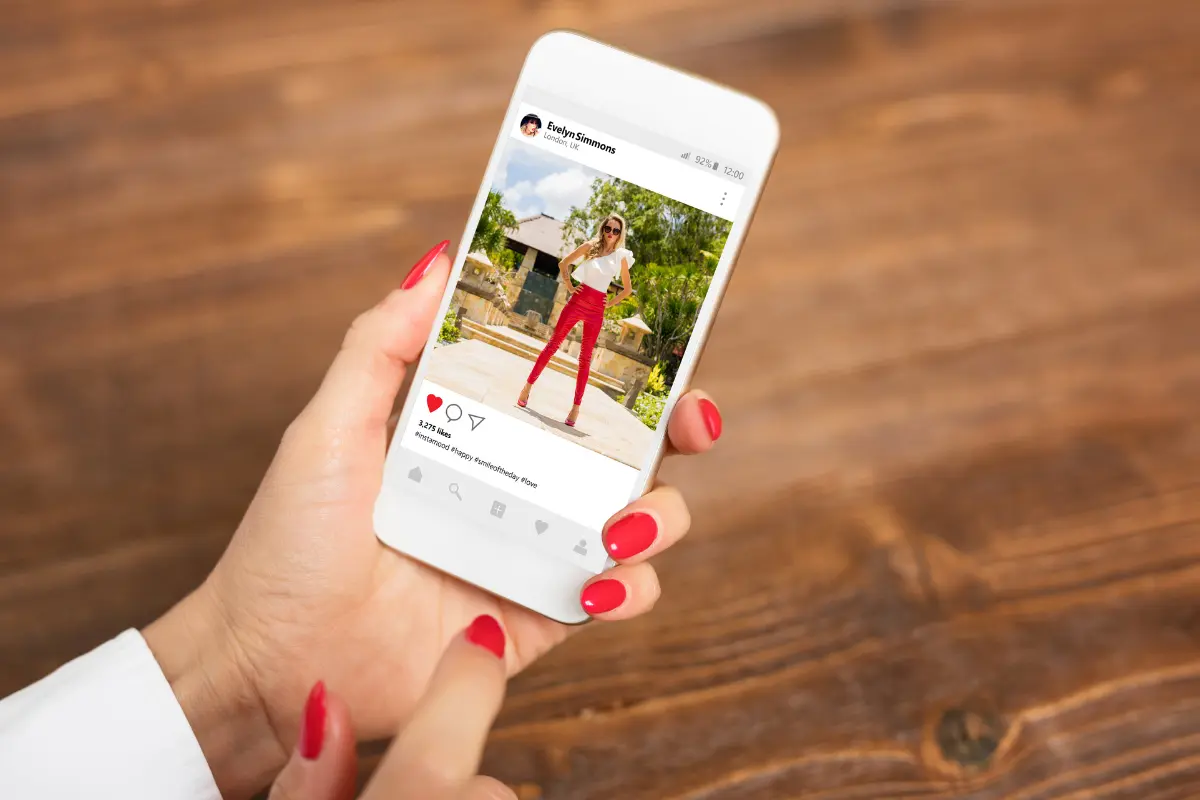How to Use Hashtags on Instagram Posts vs. Reels

Instagram hashtags are a powerful tool for increasing visibility and engagement on both posts and Reels. However, the way you use hashtags can vary between these two content formats. In this article, we’ll explore the key differences between using hashtags on Instagram posts and Instagram Reels, and how to optimise your strategy for each.
Why Are Hashtags Important?
Hashtags help Instagram’s algorithm categorise and serve content to users who are interested in a particular topic. Whether it’s an Instagram post or Reel, hashtags can:
- Increase your reach by showing your content to users who don’t follow you.
- Improve engagement by targeting the right audience.
- Boost discoverability on the Explore page and in hashtag search results.
The Difference Between Instagram Posts and Reels
Before diving into hashtag strategies, it’s important to understand the difference between Instagram posts and Reels:
- Instagram Posts: These are images or videos that appear on your feed and can be static images, carousel posts, or short videos. They tend to stay on your profile permanently unless you remove them.
- Instagram Reels: These are short, 90-second videos that are intended to be more dynamic and engaging. Instagram’s algorithm promotes Reels heavily on the Explore page, and they’re more likely to go viral due to their quick and entertaining nature.
While both posts and Reels use hashtags for discoverability, the approach and effectiveness can vary.
How to Use Hashtags on Instagram Posts
1. Hashtag Placement
On Instagram posts, you can place hashtags either in the caption or the first comment. Both placements are effective, but they have different advantages:
- In the Caption: Hashtags placed in the caption are immediately visible to your audience. This is the quickest way to ensure your post is categorised by Instagram’s algorithm as soon as it’s uploaded.
- In the First Comment: Placing hashtags in the first comment keeps your caption looking clean and clutter-free. However, you must post the comment immediately after the post goes live to make sure the hashtags work effectively.
2. Optimal Number of Hashtags
Instagram allows up to 30 hashtags per post. While you can use the full 30, Instagram recommends using 3-5 highly relevant hashtags. However, most users find a middle ground, using 10-15 hashtags to balance reach and relevance.
3. Choosing Hashtags for Posts
- Use a mix of popular, niche, and branded hashtags to increase your chances of reaching the right audience.
- Popular hashtags like #Love or #Travel have millions of posts, so they might not always help you stand out. Instead, combine these with niche hashtags (e.g., #SoloTravelTips) that are more targeted and specific.
- Don’t forget location-based hashtags if your post is related to a particular place.
4. Post Longevity
Instagram posts tend to have a longer shelf life than Reels. Your post might continue to gain traction days or even weeks after it’s published if it appears in hashtag searches. So, your hashtags need to have long-term relevance.
5. Engagement and Community
Hashtags in posts can also be used for building community. For example, using hashtags like #PlantParents or #Bookstagram can connect you with specific communities that share similar interests. These communities often engage more deeply with content.
How to Use Hashtags on Instagram Reels
1. Hashtag Placement
Hashtags for Instagram Reels are best placed directly in the caption. Since Reels are dynamic and fast-paced, placing hashtags in the first comment doesn’t work as effectively. You want the hashtags to be processed by the algorithm as soon as the Reel is posted.
2. Optimal Number of Hashtags
Similar to posts, Instagram allows up to 30 hashtags on Reels. However, Reels can benefit from using 10-20 hashtags due to their viral nature. Using more hashtags gives Reels more opportunities to be categorised under various topics and trends.
3. Choosing Hashtags for Reels
- Focus on hashtags that are relevant to the content and trends. Since Reels are often used for viral challenges or popular content, using trending hashtags can give your Reel a significant boost.
- Incorporate content-specific hashtags (e.g., #VeganRecipes for a cooking Reel) along with trending hashtags (e.g., #ReelItFeelIt, a popular challenge).
- Niche hashtags also work well on Reels. For example, a beauty Reel might use #SkincareRoutine along with more specific ones like #GlowUpChallenge to tap into different audiences.
4. Reel Longevity and Viral Potential
Reels have a shorter attention span but greater potential for virality. Instagram’s algorithm tends to promote Reels more aggressively, especially on the Explore page and in the Reels tab. This means that the right combination of hashtags can make your Reel go viral quickly.
5. Use Hashtags for Challenges and Trends
One of the unique features of Instagram Reels is their ability to participate in viral challenges. Using hashtags like #DanceChallenge or #30SecondMakeover can help your Reel reach an audience that’s actively engaging with those trends. Make sure to join in on relevant challenges in your niche to maximise reach.
Key Differences Between Using Hashtags on Posts vs. Reels
| Aspect | Instagram Posts | Instagram Reels |
| Placement | Caption or first comment | Caption |
| Optimal Number | 3-15 hashtags | 10-20 hashtags |
| Content Focus | Long-term relevance | Viral, short-term trends |
| Engagement | Focus on community and consistent engagement | Potential for viral growth and fast-paced interaction |
| Lifespan | Can perform well over days or weeks | Usually peaks quickly but can go viral |
| Hashtag Types | Content-specific, niche, branded, community, location-based | Content-specific, trending, challenge-based, niche |
Tips for Using Hashtags Effectively on Both Posts and Reels
1. Research Hashtags
Always take the time to research which hashtags are performing well in your niche. Use tools like Instagram’s search function or third-party apps like Later or Hootsuite to find trending and relevant hashtags.
2. Mix It Up
Don’t use the same set of hashtags on every post or Reel. Instagram’s algorithm might flag this as repetitive behavior, which could reduce your reach. Instead, rotate between different groups of hashtags.
3. Track Your Performance
Monitor the performance of your hashtags using Instagram Insights or other analytics tools. Check which hashtags are driving the most views, likes, and comments. This will help you refine your hashtag strategy over time.
4. Stay Relevant
Whether it’s for posts or Reels, the most important rule is to use hashtags that are relevant to your content. Avoid using hashtags just because they’re popular—your content needs to match the hashtag to keep your audience engaged.
Conclusion
Both Instagram posts and Reels offer unique opportunities to reach new audiences using hashtags, but the strategies differ slightly. Posts benefit from a balanced approach that includes a mix of popular, niche, and branded hashtags, while Reels thrive on trends, challenges, and viral potential. By understanding how to use hashtags effectively on each type of content, you can maximise your reach, boost engagement, and grow your Instagram presence.
Calling all Marketers!
🔴 Are you tired of searching for the perfect job?
Whether you're into content writing, SEO, social media, graphic design, or video editing—full-time, freelance, remote, or onsite—we've got your back!
👉 We post over 30 job opportunities every single day. Yes, every day (all verified).
Join the most reliable and fastest-growing community out there! ❤️
And guess what? It’s FREE 🤑
✅ Join our WhatsApp Group (Click Here) and Telegram Channel (Click Here) today for instant updates.





![Best Times to Post on Social Media in 2025 [Each Platform]](https://magicalmarketers.com/wp-content/uploads/2024/10/Social-Media2.jpg)

